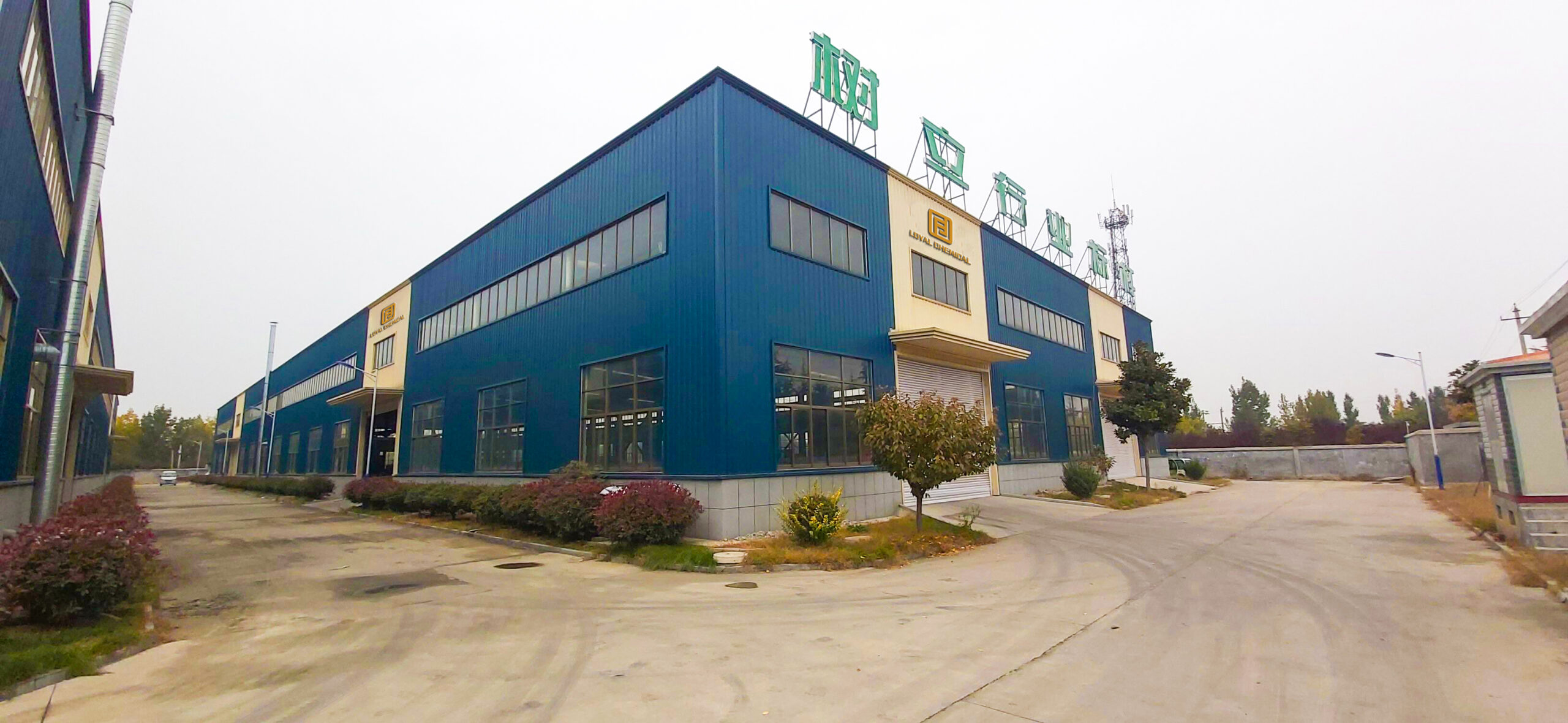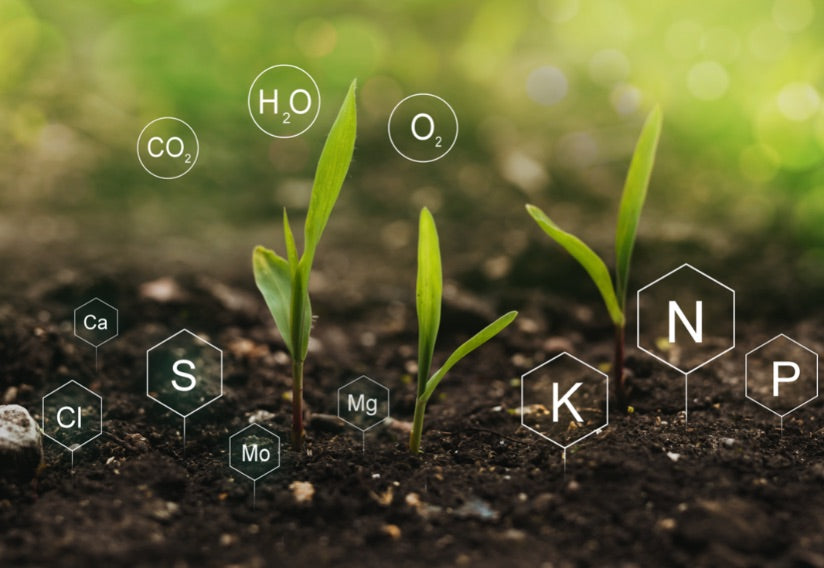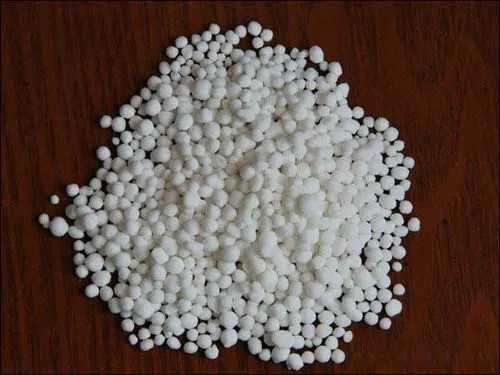Introduction to Organic Fertilizers in Sustainable Agriculture
Organic fertilisers are important for sustainable production systems because they can replace pesticides and inorganic fertilisers. Soil fertility needs to be maintained for agricultural production and environmental health. Good fertilisers need to support plant growth and animal nutrition with all the essential nutrients. Currently, the amount of organic fertiliser use is decreasing – unfortunately. All organic fertilisers are derived from nature: from the excreta of animals and plants to the minerals present in the earth. The nutrient content of soil differs depending on the type of fertiliser used.
What are organic fertilisers, exactly? Organic fertilisers are any material that contains an enriched organic mass, from bone meal to manures to the compost pile and seaweed extracts. As Jacob Mittleider, a world-renowned agronomist, observed, ‘The use of organic fertiliser is not only to feed the plants this growing season, but to build the soil structure and fertility for the coming centuries of crops.’
Traditional animal-based fertilisers are like manure, bone meal and fish emulsion, all having high nitrogen and phosphorus content.
Plant-based fertilisers are produced using compost, crop residue and green manure, which are especially abundant in nitrogen.
Mineral-based fertilisers, such as rock phosphate and greensand, provide minerals such as potassium and phosphorous without the addition of synthetic chemicals.
Role in Sustainability: Organic fertilisers have an important role in sustainable agriculture practice because of the many advantages they provide in maintaining soil health. First, they help to make the soil hold more water, resulting in the soil being able to stay wetter for longer periods of time. This, in turn, promotes and maintains a high level of biological activity and soil structure.
Second, the plants are less likely to topple over or be washed out of the soil due to heavy rain or severe winds because the roots are more firmly anchored in the soil structure, considerably reducing crop loss. Additionally, organic fertilisers support soil biota, which facilitates more efficient nutrient recycling in the soil, making fertiliser more effective and minimising the amount that is lost. ‘Organic fertilisers do not simply add nutrients to the soil but also create a live, biologically active soil!’ says Mittleider.
It is through the constant application of organic fertilisers that farmers and gardeners can ensure that the agriculture system balances plant health and productivity, so that the agriculture system will remain a productive and environmentally friendly one for generations ahead. This is holistic fertilisation. The environment has nothing to fear from it, and crops have everything to gain.
Benefits of Using Organic Fertilizer
For these reasons, the introduction of organic fertiliser enhances soil fertility, with benefits that go far beyond the nutritional needs of the plants. It is the stepping-stone toward an agricultural production system that is more sustainable and humane, one that respects and regenerates the natural environment.
Nutrient Release Dynamics: Organic fertilisers generally have slow-release properties. For instance, synthetic fertilisers provide plants with nutrients quickly, but when the nutrients enter the soil they are sometimes washed away by rain quickly, because there is little attendant organic matter in the soil to protect these nutrients. Organic options slowly release nutrients, and this is more sympathetic to plant growth cycles. Plants take up nutrients little and often. Dr Linda Chalker-Scott, a horticultural scientist told me ‘because the slow-release mechanism of organic fertilisers minimises nutrient leaching and loss, they are very efficient and minimal impact fertilisers compared to inorganic fertilisers that release nutrients very rapidly.’
Its Effects on Soil Structure and Fertility: By adding extra organic materials to the soil, organic fertilisers promote longer-term effects on soil structure, improving soil fertility. Deep-rooted perennial plants are able to increase soil organic matter by large amounts. They make the soil more sponge-like and provide better aeration and moisture retention, promoting a thriving soil biotic community that supports the roots of plants. ‘The organic matter contained in these fertilizers act like a sponge,’ Dr Chalker-Scott says, ‘which can retain water and nutrients that are vital for better plant growth and promoting soil resilience against erosion and degradation.
Environmental Benefits: The favourable environmental impact of organic fertiliser is also significant. They reduce demand for chemical inputs, which are often implicated in detrimental environmental effects, including waterway pollution from runoff, as along with fertilising crops, their use contaminates groundwater and marine ecosystems. Also, as Chalker-Scott points out, ‘the use of organic fertiliser feeds biodiverse microbial life in the soil, translating to improved soil health and nutrient recycling – that is, reduced footprint through lower greenhouse gas emissions associated with synthesising and applying chemical fertilisers in the first place.’
In conclusion, it can be said that apart from helping plants to grow organically, using organic fertilisers also contributes to an overall ecological management at a global scale, retaining biodiversity, utilising water, and minimising our carbon footprint. For this reason, use of organic fertilisers by farmers and gardeners contributes to a more environmentally friendly agricultural model.

Best Practices in Applying Organic Fertilizer
Using organic fertiliser efficiently means having knowledge of optimal timing, the proper methods and how it relates to other agricultural practices, in order to achieve the best outcomes with respect to increasing crop yields for diverse crops under different agricultural conditions.
Soil needs to be spiked with fertiliser at the right time – in order to jumpstart flowers or vegetables with food at the beginning of the growing season, for instance. But that timing could vary even more depending on the type of crop grown and soil conditions. ‘For temperate climates, organic fertiliser should be applied in the fall,’ says Harold van Es, professor of soil science at Cornell University in New York. ‘That’s when temperatures decrease, and a lot of nutrients will break down, which are needed in the spring by the crops.’ In tropical climates where vegetables can be grown year round, try to coincide your application of fertiliser with the start of the rainy season to avoid leaching.
Dosage Considerations: The amount of organic fertiliser used should be based on the level of nutrients already present in the soil, and what the crop requires. Soil testing is the key info here, giving you detailed recommendations on what’s actually inside the soil in terms of the nutrient balance, along with the pH. Dr van Es notes: ‘Over-application can be as detrimental as under-application, and soil tests can help avoid both the environmental and economic costs of delivering nutrients at the wrong level.
Co-ordination with Sustainable Methods: Organic fertilisers are not magical on their own. They work best when they’re integrated into sustainable methods, such as crop rotation, intercropping, and reduced tillage. Crop rotation is the practice of growing two different crops in the same area – switching to another crop the following year, and so on. If done in a way that two crops in the rotation don’t share the same pests or diseases – and if plastic mulch is used in between – crop rotation helps the soil avoid depletion. This practise also reduces the risks of pests and diseases, and helps to improve the soil structure and organic matter. It enhances its resilience and liveliness.
Intercropping is the practice of planting two or more crops very close to each other. While some intercrops are entirely different – like mixing corn with kidney beans – others are complementary because they have different rooting behaviours. The dense root structure of the one It helps in both enhancing soil health and nutrient uptake, and also reduces the risks of weed and pest incursions. Reduced tillage is the practice of retiring the plough and abandoning the plans to turn over the crop residue every year. This technique can conserve the soil structure, improve the soil’s water-holding capacity, and sequester more carbon in soil particles.
Technological Advances in Organic Fertilizer Production
Nowadays, organic fertilisers are produced through a number of technologies, which greatly increase the efficiency of these natural nutrients. Moreover, the progress in composting technologies and converting waste to organic fertilisers play an important role to help modern agriculture to be sustainable.
Numerous new composting technologies have emerged since the traditional practices were first employed. These include in-vessel composting, vermicomposting and anaerobic digestion. In-vessel composting provides more control of the environmental factors, accelerating the decomposition of organic matter and minimising odour. As Nancy Sullivan, an environmental engineer who attended the webinar, explains: In-vessel composting systems can control the temperature, moisture content, and aeration that facilitate organic matter breakdown.
They therefore provide more control of the process, allow operations in different seasons, and shorten the treatment cycles.Composting organic matter with the aid of earthworms is known as vermicomposting, and this process results in highly nutritious compost rich in microorganisms. Meanwhile, anaerobic digestion of organic matter produces both compost and biogas. Nancy Sullivan further comments: The anaerobic digestion of organic matter includes a dual purpose technology to provide waste management and transform it into energy. It thus can fit in the circular economy in agriculture.
Waste to Wealth: Utilising agricultural, municipal and industrial solid and liquid wastes for the production of organic fertilisers is becoming a trend towards sustainability. Such processes involve the treatment of organic wastes into compost that can be used for soil amelioration. ‘Using waste instead of discarding it creates fertiliser from what would have been waste, solving the output problem of producing fertiliser, while producing a beneficial commodity from what would have been a potential pollutant,’ says Dr Sullivan. Doing this reduces the use of landfills, decreases emissions of greenhouse gas and provide renewable source of nutrients for agricultural crops.
Technology only improves the nutrient quality of the fertiliser and its efficient application to the soil and the crop Dr Robbie Sullivan, an international expert on organic agriculture at the University of Western Australia, agrees, noting that high-tech tools such as global positioning systems (GPS) and sensors can aid organic farmers in applying fertiliser more precisely and efficiently. ‘Technology can help tailor fertiliser applications to crop needs, and can reduce fertiliser application and losses,’ he explains.
Case Studies: Successful Implementation of Organic Fertilizer Programs
From the removal of most of West Africa’s coastal forests by the seventh century, to the fields of Oregon clear-felled to plant bitter wheat, or the savannahs of Laos ploughed into charcoal and dust to plant hurting rice, the story is told everywhere of a world changing in ways that make it less habitable to plants, animals, and people. Evidence from many parts of the world – from fertiliser ‘hot spots’ in Taiwan, Cameroon, Venezuela, and China – shows that sound organic fertiliser practices benefit the land when they are followed.
Case Study 1. Integrated Nutrient Management in India: In the Indian state Tamil Nadu, the government-funded programme took an integrated nutrient management (INM) approach focusing on the conjunctive use of organic manure with the chemical fertiliser to enhance paddy yields. As observed by Dr Amanpreet Chopra, an agricultural scientist involved in the project: ‘Balanced use of organics with minimal chemical inputs resulted in 25 per cent more produce when compared with the traditional chemical-only mode of production.’ This generated not only more yields but also sustained the soil health across the growing seasons.
Case Study 2 Organic Vineyards in France: A growing trend toward organic viticulture in France is seeing the rampant use of organic fertilisers in vineyards as a new money-maker for the wine industry. Farmers report that the use of organic fertilisers has resulted not only in the production of better grapes and greater yields, but also enhances the soil biodiversity and reduced instances of disease outbreaks. Dr Henri Bouchard, Viticulturist: Organic fertilisers have reinforced the natural balance of soil ecology and are important to the longevity of our vineyards.
Case Study 3: Community Composting in Urban Gardens in New York, USA: Some urban community gardens in New York City have introduced localised composting systems to manage the amount of organic waste produced, recycling the garbage as fertiliser for the garden. Not only has this initiative lessened the amount of waste sent to landfills, but it has given power to urban communities to grow their own healthy food, says Dr Lisa Goldman an urban sustainability expert: ‘These gardens are proof that urban areas can become a driver towards sustainable agriculture through closed-loop systems that foster food security.
Takeaways: These five case studies illustrate the versatility of organic fertiliser use, spanning various environmental and scale domains. Several common takeaways can be drawn:
Education and training: Some of the most successful programmes include meaningful education and training components to help farmers and other stakeholders understand how organic fertilisation can benefit them and how to best practice it.
Community Involvement: Engaging the community leads to greater acceptance and sustainability of organic practices.
The government and policies: Appropriate policies and subsidies can greatly enhance the use of the organic fertilisers above.
These examples demonstrate the enormous potential to use organic fertilisers to increase crop yields and quality while also enhancing environmental sustainability and community health. Given the widespread applicability and success of these programmes, expanded use and innovation with organic fertilisers are welcome and much needed.

Challenges and Solutions in Adopting Organic Fertilizers
Moving to organic fertilisers means not only facing up to all the practical and logistical challenges of making the shift from traditional to organic agriculture, but also dealing with other educational- and economic-based obstacles.
Common Obstacles:
Knowledge Gap: Farmers are used to the clear and quick results that chemical fertilisers provide. They might not know that organic options can be cheaper in the long term. This might help to explain some resistance.
Disappointments Caused by Variability in Quality and Performance Organic fertilizers, by nature, are often variable in nutrient content and effectiveness, which is disappointing to many farmers who expect consistent harvest yields.
Issues surrounding the Supply and Accessibility: In many areas and especially areas where large scale conventional style farming methods predominate organic fertilisers that are of high quality can be difficult to source.
Strategies to Overcome Challenges:
Education and awareness: Workshops and training sessions about the advantages of organic fertilisers and their use are extremely important to help spread awareness among the farmers as to the long-term benefits to soil health and crop resilience.
Making Supply Chains More Robust: Develop a strong local supply chain for organic fertilisers to sustain reliable quality and availability. This may include establishing local composting facilities or organic waste-processing plants.
Policy Support and Incentives: If government policies encourage the use of organic fertilisers in order to achieve such milestones, they can enormously help to facilitate the uptake of the practice. If a fertiliser is subsided, farmers can get them for cheaper and farmers can be offered grants or tax reduction if they plan to switch to organic fertiliser.
What’s next? Where is research headed? More contemporary processing methods and application techniques are increasing the efficiency, apparent efficacy and ease of use of OM fertilisers. More research needs to be conducted to make this type of fertiliser more competitive with synthetic fertilisers, according to Foster, a soil scientist at Kansas State University, who noted: ‘More research and development is needed to make organic fertilisers more efficient and effective.’
The problems related with the use of organic fertilisers are enormous but if we could work our way out through adequate educational process, strengthening the supply chain and also the government policies then we could overcome these problems. The future scope of agriculture with using organic fertilisers seems bright as these natural fertilisers are here to help improve the scenario of global farming by promoting the health and quality of soil with least impact on the environment.
Conclusion: The Future of Agriculture with Organic Fertilizers
With better organic fertiliser, a switch to organic farming will mark the beginning of a new chapter of agricultural production with more sustainable paradigms and better operations of environmental stewardship. Over the past months, we have been trying to demonstrate advantages of organic fertilisers, the best techniques and emerging technologies about how to better utilise them in agricultural production and which crucial requirements should be met. As a result, we all could be more than certain that organic fertilisers are the important part of modern agriculture and its usage will be further popularised in the future.
In sum These benefits to soil health, crop yield and the environment reinforce each other. Well-structured, drought-resistant soils with high levels of biodiversity mean that organic farming is more flexible and resilient in the face of climate change and more robust in the face of resource constraints. The picture of increased environmental benefits, especially reduced chemical runoff and increased biological diversity, adds weight to the case for a shift to more organic methods.
The Need for Continued Innovation and Best Practice: The potential of organic fertiliser applications will be best realised through continuing innovation and best practices in production and use. Advances in technology such as more efficient ways to compost manure and recycled organics and the use of precision agriculture tools to apply low levels of fertiliser with high effectiveness can make use of organic materials more effective and easier to utilise.
Here are some resources related to using organic fertilizer:
- Texas Education Agency: Offers various resources and information that might indirectly relate to environmental education or science studies that could include aspects of using organic fertilizers.
- Centers for Disease Control and Prevention (CDC): While primarily focused on health, the CDC website offers a wide range of information that sometimes overlaps with environmental health issues which could include the use of organic materials such as fertilizers in public health contexts.
- Pennsylvania Department of State: Provides a variety of resources and information which could include regulations and guidelines related to business practices in agriculture, potentially touching on the use of organic fertilizers.







